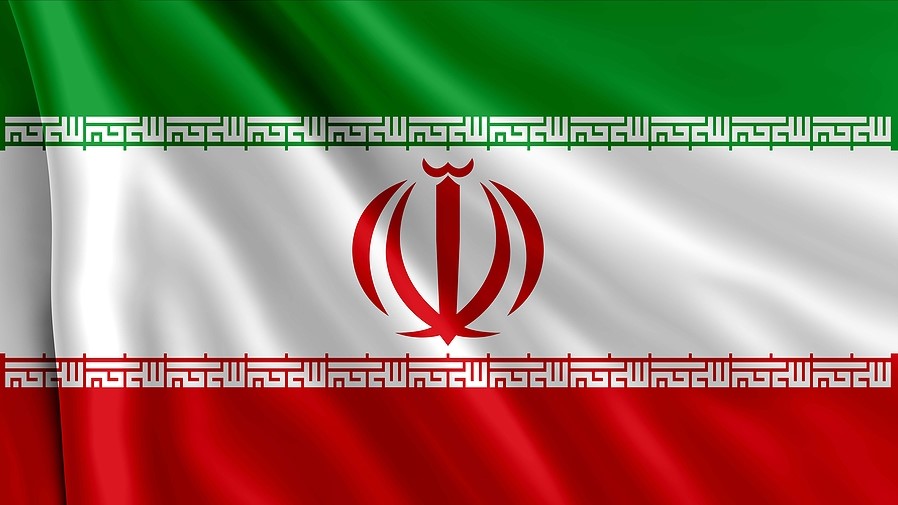News
Hot Topic: The Water Crisis In Iran
Experts believe Iran has around ten years to address water scarcity in the country before it becomes an environmental and humanitarian crisis.
As everyone becomes more aware of the impact of climate change and rising global temperatures, many also know we are heading towards a water shortage, as a result of waste, pollution and poor water management.
Although the problem persists in most places across the world, it is nearing crisis levels in Iran, with many believing the country’s reserves will be completely empty within the next few years.
Why is Iran suffering from ‘water bankruptcy’?
There are many reasons why Iran, in particular, has a shortage of water.
- Climate change
The country’s leaders, for instance, blame climate change for the lack of water available, nearing just 1,000 cubic meters of water for each person per year, which is what is considered to be a water crisis.
Rising global temperatures have led to natural water resources drying up, with NOAA Climate revealing the earth’s temperature has risen by 0.14F every ten years since 1880.
Since 1981, the speed at which temperature has been increasing has doubled, rising by 0.32F per decade. Therefore, the earth’s surface temperature is currently 2F warmer than it was around 140 years ago.
As Iran is already a hot country, this has led to catastrophic consequences. Some areas, for instance, have seen the mercury rise above 50C (122F), putting extra pressure on water reserves.
Not only is water drying up, but people in these extremely hot areas, such as Khuezestan, need more water to stay hydrated and well.
In fact, many of those living in Ghilavieh and Malashieh in Khuzestan suffer from severe dehydration as they are struggling to replenish the water they are losing in the heat.
Mismanagement of water supplies
However, some argue climate change is not solely to blame for the lack of water in Iran.
At the end of last year, the Iranian regime’s Islamic Revolutionary Guard Corps (IRGC)’s Chamber of Commerce gave a stark warning about the shortage of water in the country.
It stated that if the current water management system remains in place, living organisms might not be able to survive in Iran beyond the next 20 years.
- Using all water resources
This could be partially due to Iran using up all of its renewable water resources, even though the Rio de Janeiro Accord of 1992 protects nations from consuming more than 40 per cent.
- Old agricultural practices
Furthermore, old, dated agricultural practices continued to be used in Iran, accounting for 90 per cent of the country’s water consumption. These antiquated methods mean a lot of water is wasted.
However, a lack of available water results in soil erosion, as well as poor vegetative growth, which means its agriculture is being negatively impacted.
This has also led to flooding, as the land is so dry, it is unable to soak up rainwater when it falls. This results in more agricultural destruction, as well as, sadly, loss of life.
At the same time, much of Iran’s land is unstable, which means those living there are even more vulnerable to natural disasters, which are occurring with increasing frequency.
Most recently, there was an earthquake on the border of Iran with Turkey, while devastating flooding occurred in early 2022, affecting more than 80,000 people.
- Deteriorating water network
IRGC is not doing as much as it could to support Iran’s water supply, as it is known that its network is rapidly deteriorating.
This is leading to more than one billion cubic meters of water being wasted, amounting to as much as one-seventh of the country’s entire water resources.
Instead of repairing the network to reduce this wastage, IRGC simply advises citizens to consume less water.
Simultaneously, increasing the number of dams by 1,300 over the last 44 years has resulted in Iran’s waterways drying up, depleting natural resources and impacting the quality of the land.
There has also been an increase of deep wells being built over the last few decades, rising from 47,000 in the ‘70s to 850,000 in 2018.
The regime has simply raised the price of water, increased exports, and ramped up industries that deplete water resources even further.
What is the extent of the water problem?
By damaging underground water reserves, mismanaging water networks, and not recovering the country after natural disasters, director of the United Nations Water Think Tank Kaveh Madani believes IRGC have caused serious water problems for Iran.
For a start, water scarcity has led to unrest among citizens, resulting in protests. Unfortunately, the regime simply responded to this by telling the public the regime will deal with dissent through suppression.
It is thought the nation only has 103 billion cubic meters of water left, though the real figure could be significantly less than this, as official statistics might not be painting the entire picture.
Although authorities claim there is 1,200 cubic meters of water per capita, which has remained the same amount since 2007, this might not be an accurate representation of the current situation, given it has not changed in 16 years.
Instead, member of the Chamber of Commerce Gholamhossein Shafi’ei warned Iran needs to make serious alterations to its water management within the next decade.
Failure to do so, he stated, could mean life becomes unsustainable in the country, killing off ecosystems and the environment, but also forcing out its population of 87.92 million people as well.
If temperatures continue to rise as they have been doing, it will not become feasible for citizens to continue living in the region without an adequate supply of water to keep them hydrated and alive.
Therefore, the public will be forced to escape the harsh conditions or succumb to fatal health implications of severe dehydration and starvation from the lack of vegetation and livestock.
